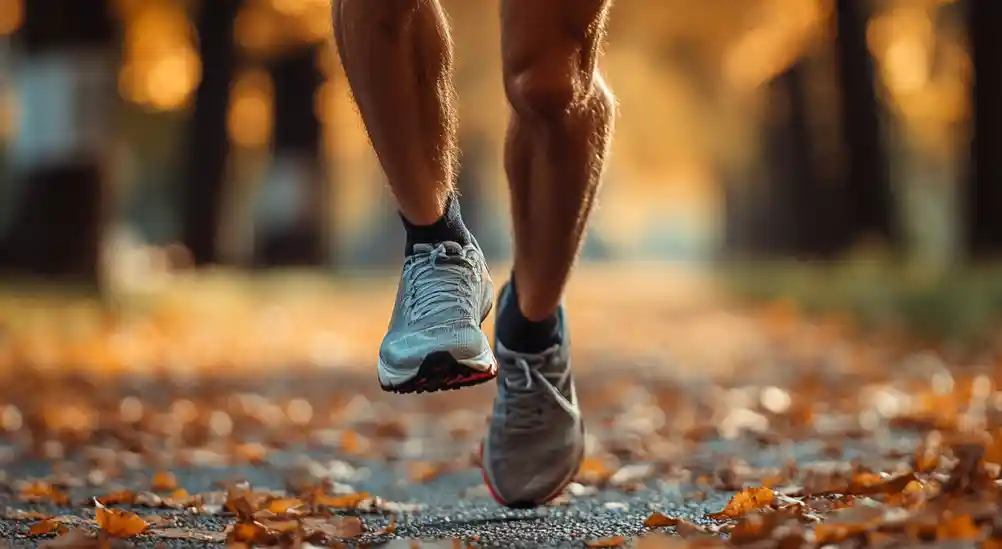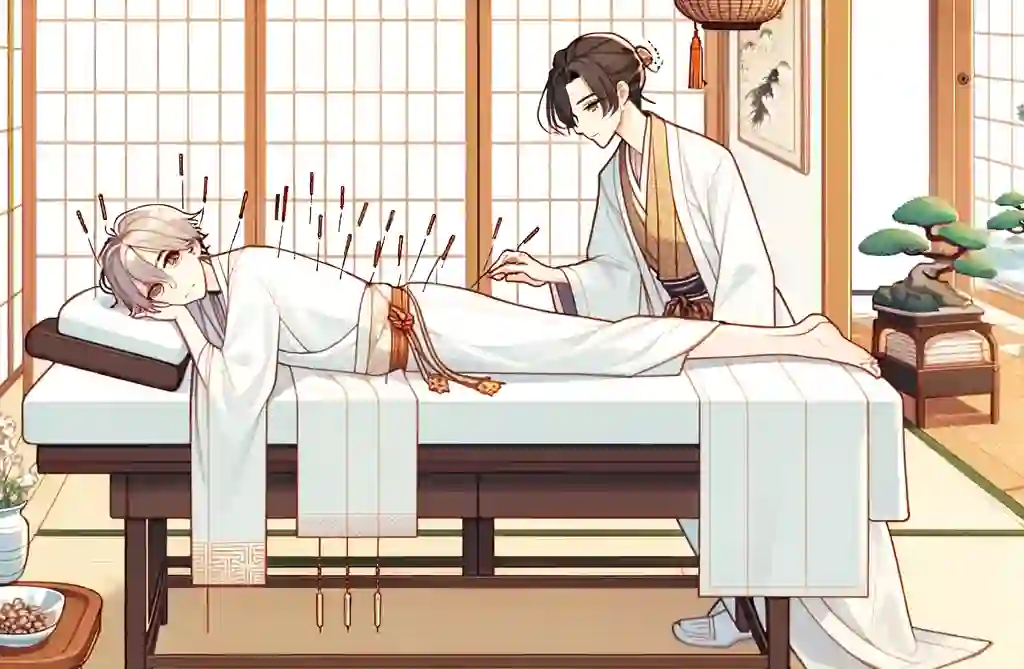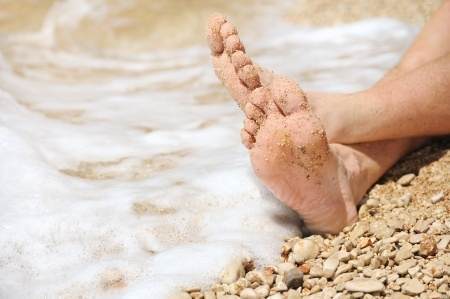Custom Orthotics: Caution When Getting Orthotics

You just got a custom pair of orthotics but they aren’t helping. What happened?
Did you get ripped off? Maybe custom orthotics don’t work for you.
One of the most commonly overlooked problems with custom orthotics is the shoes. A chiropractor or physiotherapist may recommend and give you a pair of great custom-made orthotics.
Still, these great pair of custom orthotics aren’t helping, even worse the orthotics are giving you pain in new places.
So what is happening?
Break In Periods For Custom Orthotics
With any new pair of custom orthotics, there’s a break-in period. It’s not like buying a new pair of shoes. Shoes aren’t custom moulded to your feet.
Orthotics, on the other hand, are custom-made to take into account how your feet are working while you are walking. This means that there’s going to be more support around the arch and sometimes around the heel, balls of the foot and other areas.
See Also: Do You Need Orthotics: Custom Orthotics Guide
The extra support for the foot means that your foot has to deal with a new position which may cause temporary pain from ligaments, muscles and tendons that haven’t been in that “correct position” for a long time.
“Correct positioning” of the foot can cause a chain reaction which starts in the foot and moves up the body to the ankle, knees, hips and lower back. A change in how the foot is positioned can change how the other bones are aligned above. Keep in mind the new aches and pains are temporary and for many of you there won’t be any pain at all.
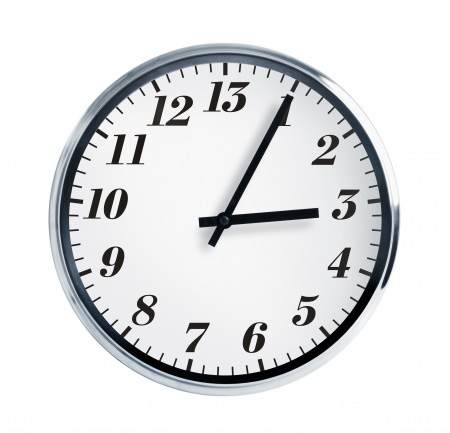
Wait Two Weeks To Get Used to Your Custom Orthotics
This break-in period for custom orthotics is usually about 2 weeks.
Pain right away:
Pain immediately upon putting the custom orthotics into your shoes usually means the shoes are too small for the orthotic or you didn’t take out the insert that comes with the shoes. You need to put the orthotics in another pair of shoes if the shoes are too small or take out that insert even if it is glued in.
Pain After An Hour:
If your shoes are large enough to accomodate the custom orthotics you might still get an ache within an hour or two of putting in the orthotics. This is normal for many people. You should walk, stand and sit in combination and take your orthotic out after 1-2 hours. This way the ligaments and muscles can adapt to changes from the new orthotics.
You can gradually increase the amount of time you leave the orthotics in your shoes by 2 hours every day until your foot is used to the support that the orthotics give you.
Pain At the End Of The Day:
If you start getting blisters or “new” calluses or corns at the end of the day then your orthotics need to be modified or the shoes need to be changed.
If there are no blisters, corns, or calluses after wearing the orthotics for the whole day means your foot is adjusting quite well.
See Also: Keep The Bunion Surgeon Away
Sharp Pains And Increasing Pain:
If you are getting sharp pain or pain that increasingly gets worse the longer you stand or walk means that:
- Shoes are too small to accomodate your custom orthotics.
- Your break-in period was too short.
- Your custom orthotic needs to be modified.
In this case, take the custom orthotics out of your shoes right away.
The Right Pair Of Shoes For Your Custom Orthotics
Quite often people just stick their orthotics in the pair of shoes they have been wearing for the last 6 months, sometimes shoes that are over a year old. Shoes wear out and need replacing.
Shoes don’t give the same support when they are worn out compared to when they are new. Besides having a recent pair of shoes you should look for the following things when buying a pair of shoes to fit your orthotics.
First, you need to bring your orthotics to the shoe store with you.
Buying A Good Pair Of Shoes For Your Custom Orthotics
Look for the following Features
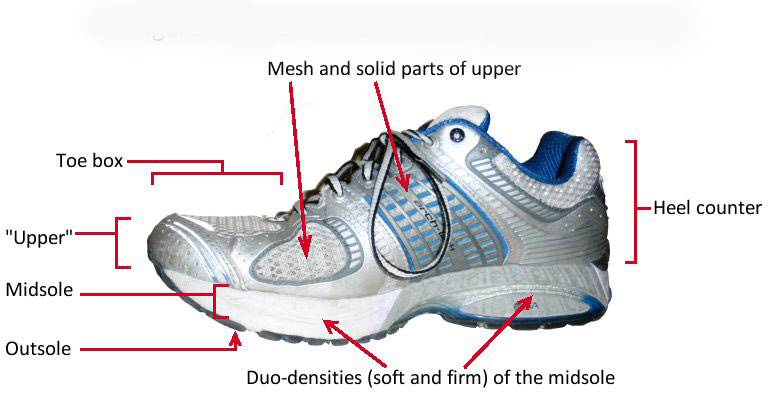
- Heel Counter: Your heel Counter is the back part of the shoe. Grab the heel counter in one hand and squeeze as hard as you can. There should be little give in the heel counter.
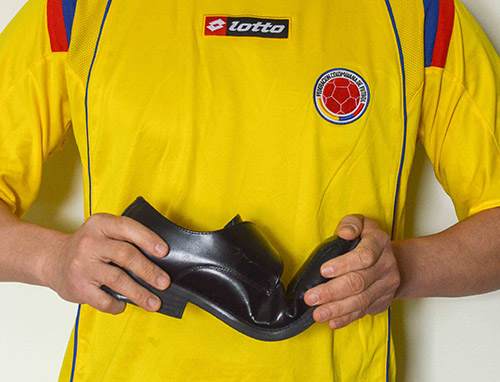
- Toe Box Bend Test: Hold your shoe with two hands with one hand just underneath the toe box. Try to bend the shoe at the sole. If it bends in the middle then the sole it is too soft. The only place the shoe should bend is where your big toe would be. ie. The shoe should bend about 2 -3 inches /4-7 cm from the front. In the picture above I am holding the heel counter with one hand and I am bending the shoe near the toe box.
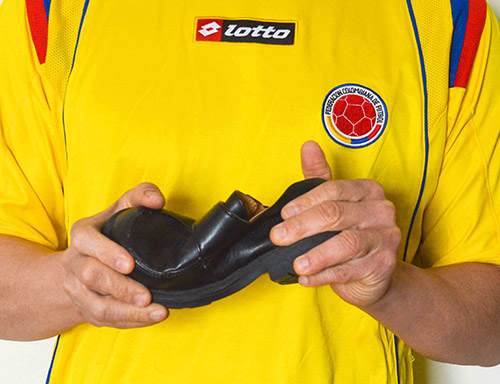
- Twist Test: Hold the front and the back of the shoe and twist as hard as you can. The shoe should not twist at all like a cheap pair of sandals. In the picture above I am twisting the shoe easily. You may be able to see that the shoe is bending way too much.
- Shoe Insert: You should be able to take out the insert that comes with the shoe. Even if they are glued in take them out and insert your orthotic. If you can’t take out the shoe insert, don’t buy the shoe.
Money Back Guarantee For Custom Orthotics
Custom orthotics should be guaranteed. Make sure when you purchase orthotics from your chiropractor or physiotherapist that they guarantee the custom orthotics. You should be happy with your purchase.
If you pair the orthotics with the right pair of shoes most people are quite happy with their orthotics.
Ask: Do you have a money-back guarantee for your orthotics if they don’t work?
In my experience I have never had to give a patient their money back because the orthotics didn’t work. I have had to modify the orthotics but in the end, every single one to date has been happy.
I recommend a one-month follow-up appointment for free but often the people who are happy cancel their appointment since they see no issues.
Tell us what you think in the comments below and like us on Facebook. This Toronto Downtown Chiropractor will answer all questions in the comments section.


